
Any word is a plain text query.

Multiple indexes can be used to represent different views of the text. A typical configuration could include string, part-of-speech, and morphological root.
Part-of-speech query: searching for gerund verbs. The reference for the part of speech labels used by Mimir can be found in the GATE Manual.

Morphological root query: searching for various forms of the verb to be.
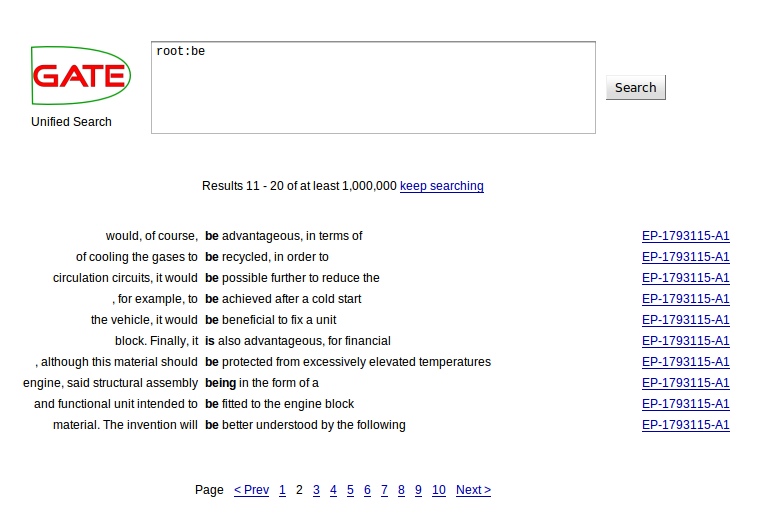
Sequence is the default operator: any sequence of queries is treated a phrase query.

Annotation queries are used to find occurrences of annotations, specified using the annotation type and, if required, feature values.
Searching for references to figures (using the Reference annotation and its type feature).
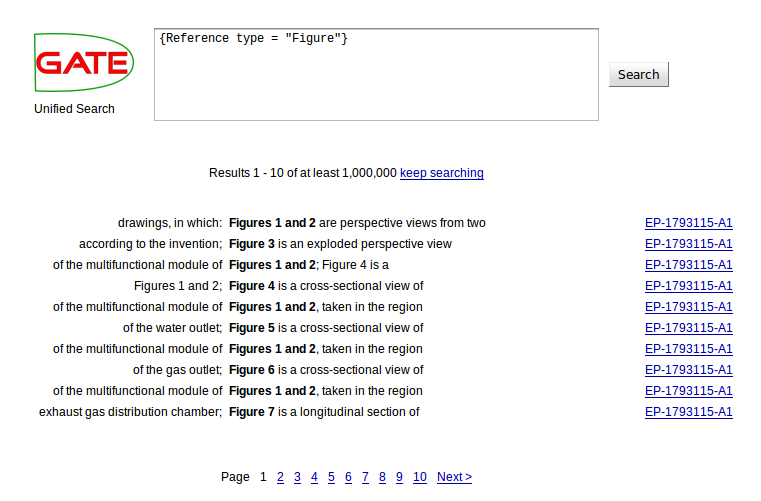
Searching for interval measurements (using the Measurement annotation and its type feature).
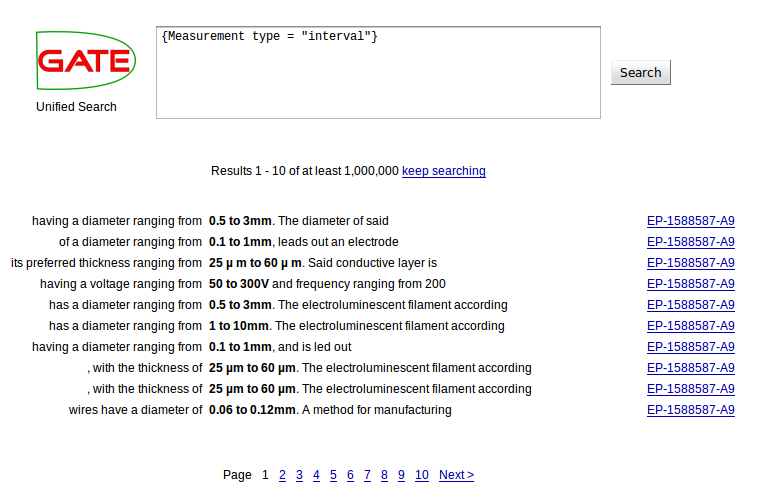
Searching for measurements of a particular dimension (e.g. length).
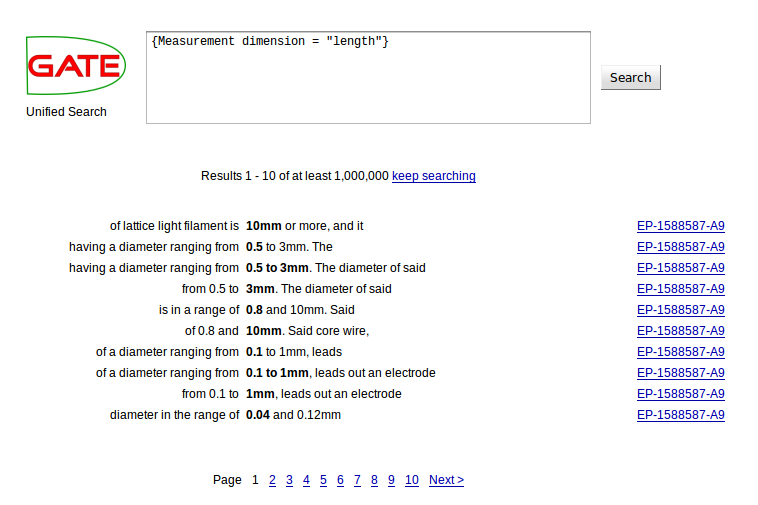
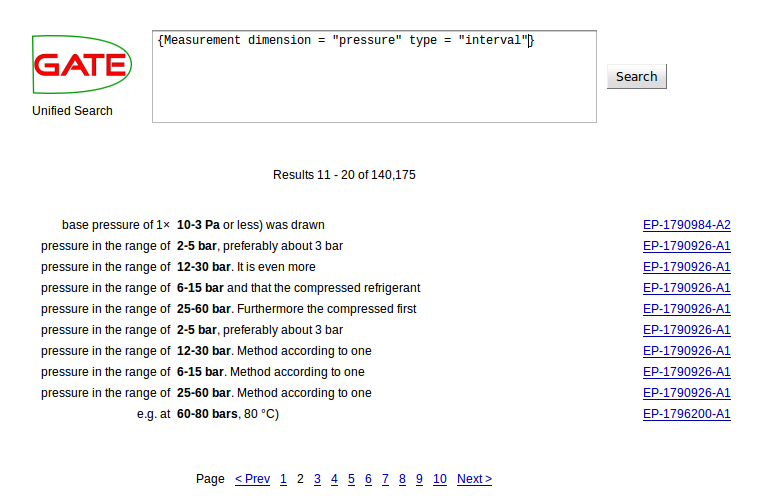
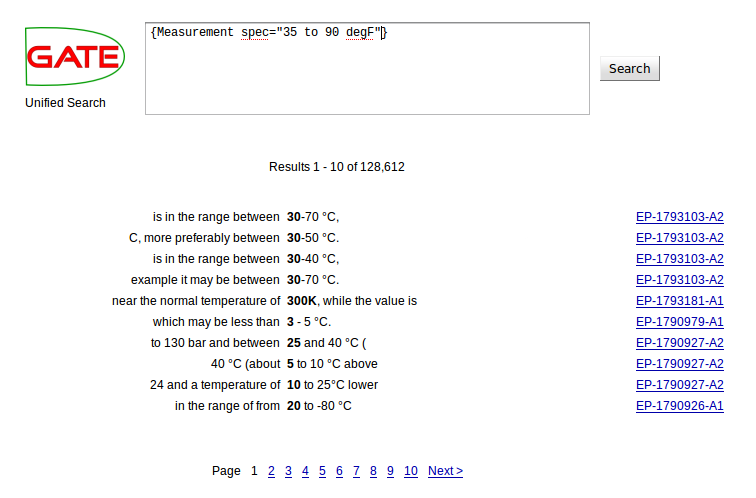
Various operators can be used to create compound queries.
Boolean operators can be used, e.g. disjunction (either "OR" or "|" can be used):
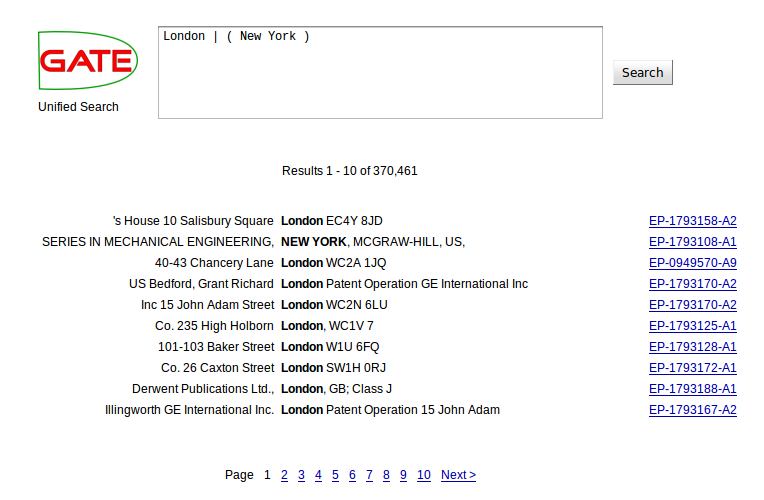
...or conjunction (either "AND" or "&" can be used):
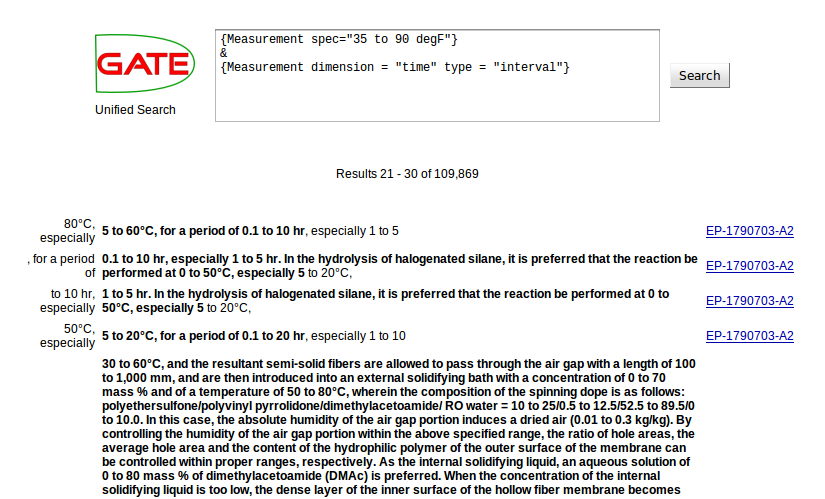
IN queries: searching for hits of a query inside hits of another (e.g. London or New York, inside Reference annotations).
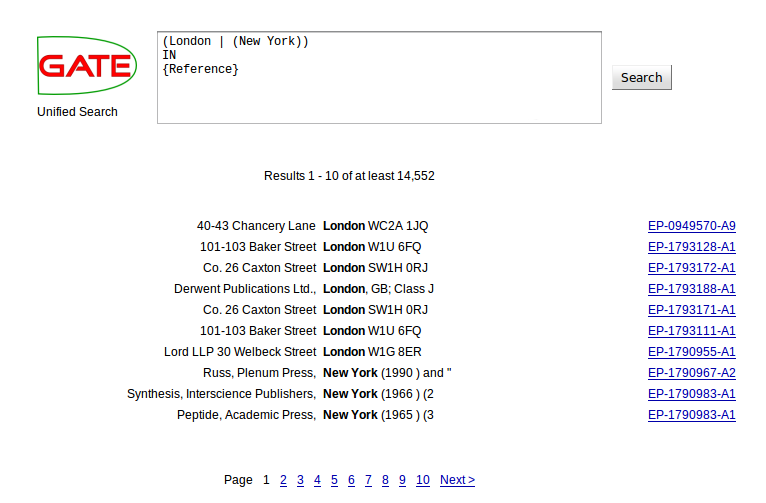
OVER queries: searching for hits of a query that cover the hits of another query (e.g. only Reference annotations that contain the word London).
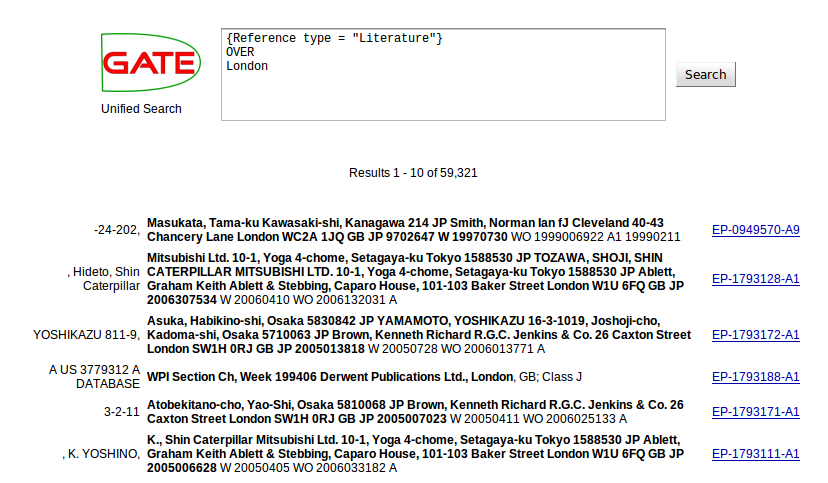
The various available operators can be arbitrarily combined to create complex queries.
Two-dimensional measurements:
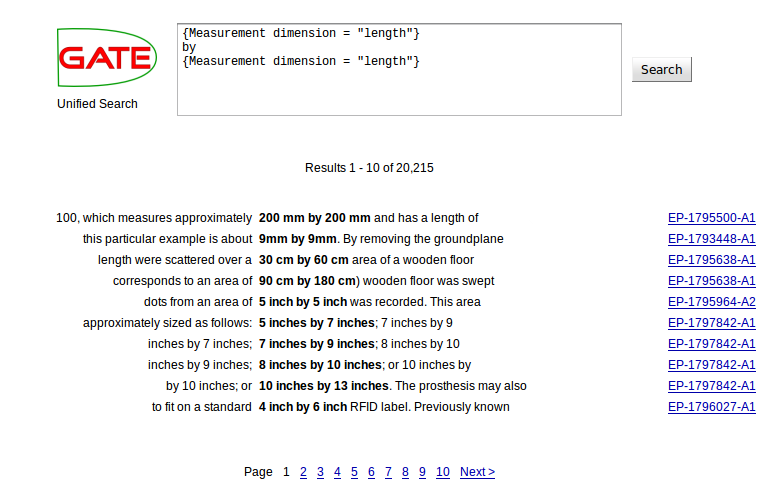
Measurement ranges:

Finding the subject of a measurement:
